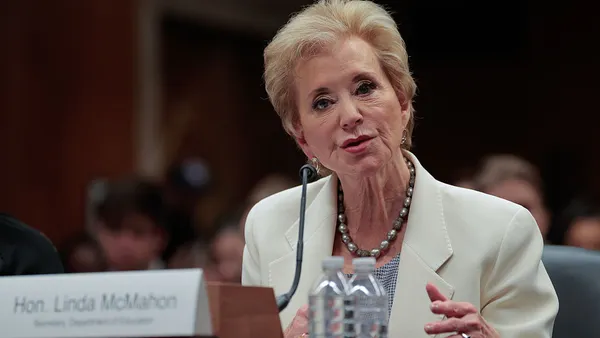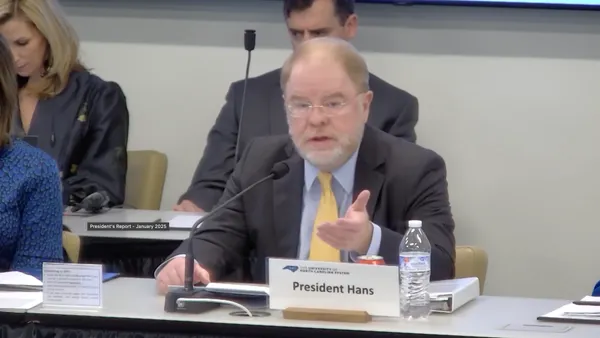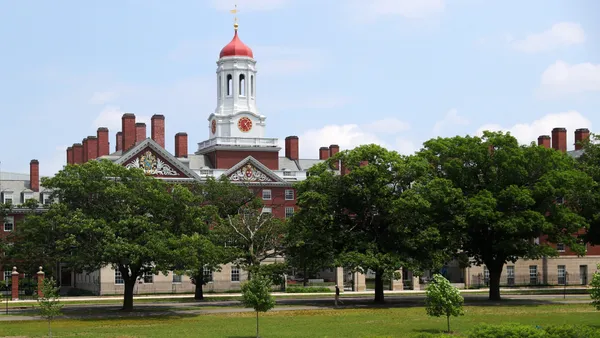Dive Brief:
- Seven out of 10 students at two-year colleges and six out of 10 students at four-year colleges indicated that they faced food or housing insecurity sometime in the last 12 months, according to The Hope Center's latest #RealCollege report, which surveyed almost 86,000 students last fall.
- About one-third (30%) of students at four-year colleges and 39% of those at two-year institutions said they experienced both food and housing insecurity in the past year. Nearly one in five (18%) community college students and 14% of four-year students experienced homelessness.
- Several populations are at greater risk of not getting their basic needs met, including African American, LGBTQ and veteran students, as well as those who are "independent from their parents or guardians for financial aid purposes."
Dive Insight:
The prevalence of housing and food insecurity on campus has critical implications for student outcomes, as an inability to meet basic needs can "undermine academic success," the report's authors note. Housing insecurity, in particular, has a strong relationship with students' persistence rates and credit attainment.
The report explains that food insecurity involves “the limited or uncertain availability of nutritionally adequate and safe food," while housing insecurity includes “a broad set of challenges," such as being unable to pay rent, moving frequently or "couch surfing" at the houses of friends and family.
Nearly half (48%) of students at two-year institutions experienced food insecurity in the month prior to the survey, while a slightly smaller share (41%) of students at four-year colleges reported the same.
Housing insecurity appears to be even more common. In the year leading up to the survey, 60% of students from two-year colleges and 48% of students at four-year colleges reported facing some level of housing insecurity. The most common issues were difficulty paying for rent or mortgage increases, as well as utility bills.
A report from the Government Accountability Office (GAO) earlier this year also found that food insecurity was an issue on college campuses, but noted that more information is needed to assess the scope of the problem on a national level. Current studies estimate that anywhere from 9% to more than 50% of college students experience food insecurity, the report notes.
The GAO also found that nearly 1.8 million of low-income, at-risk students who are likely eligible to receive benefits from the Supplemental Nutrition Assistance Program (SNAP) are not participating. Students often don't understand the requirements for the program or may be embarrassed to reach out for help.
The National Conference of State Legislatures called on states last year to take several steps to increase participation in the program. Among them, it suggests to align SNAP eligibility with financial aid eligibility; let college enrollment meet the program's work requirements; and streamline the process to file an application.
The GAO report notes that some states such as California are attempting to tackle the problem by putting funding behind food pantries and other supports. Likewise, New York state last year launched an initiative to establish a food pantry at all public colleges.
Some universities have also been doing more to address student hunger. For instance, Ohio University recently had one of its on-campus locations approved to accept SNAP benefits, and Arizona State University launched a meal voucher program several years ago.
The Hope Center report also made a series of recommendations to colleges, including to appoint staff members to address students' food and housing concerns, build a campuswide culture around tackling such issues and provide emergency funds.










